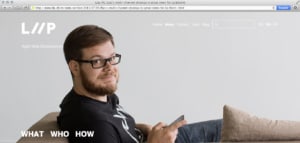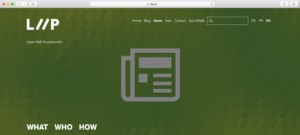Liip entered 2017 with a big success: liip.ch [1], our main website, has been certified as WCAG 2.0 AA compliant by the Access for All foundation.
Where it all began
Historically, Liip has always put great care into web content accessibility. We consider it as an important feature of any web project, for all kind of users, regardless any disability.
Of course, most of the time, customers are simply not aware of the topic at all and this is where we try to first make them know about it and then actively participate.
Depending on the sensibility of the customer, this may take long. But in the past, we have already helped a few of them to achieve the certification.
Ironically, though, our own website was not certified so we decided to start the official certification process in 2014. Without starting from scratch but using our freshly revamped website as a base.
Who did it?
Let me get this out of the way: the accessibility process is never a one-man show.
In order to achieve anything, it's paramount to involve all the “actors” of a web project: from the end users to the editors, and, of course, the people involved in the implementation.
In fact, as an informal team, designers, UXers, marketing experts and developer, all contributed to the final implementation.
I may say that everyone both brought and took away something from working on this project.
For instance, marketing people and UXers, but also developers, were surprised to discover that the accessibility improvements that they made, in the end, benefited also them, as regular website users.
Furthermore, they've been forced to see things from a different point-of-view, which is always a good thing.
Challenges on the way to accessibility
So, it took us three years and, as you may have guessed, it's not been a pleasure cruise and I am saying this for two single reasons.
Customer projects first
Customers' work has always had the priority, as it's normal for an – albeit mid-sized – agency since this is what makes us pay our bills.
We worked on the accessibility certification whenever we had some “spare” time to dedicate, basically between projects.
No worries, we can fix it
We had completely relaunched our website a bit more than one year before, so we could not afford to completely rebuild it from scratch.
We decided to apply the necessary changes to achieve the certification to the existing website.
Unfortunately, it wasn't the wisest decision.
We faced quite a few issues that simply would not have been existed in a website designed and implemented with the “accessibility in mind” from the first day. One example is the colors contrast which was not enough for most parts of the website. We wouldn't have needed to fix this if the design had addressed the issue since the beginning.
What we actually achieved
Our main goal, what pushed us to get the official certification, was (and still is) to show that we can make visually appealing websites (or web applications) accessible, removing all kind of barriers to the benefit of all users.
It was pretty obvious, in fact, that the previous design had a few “flaws” that impacted “normal” users too.
For instance, the page header elements were barely readable for non-visually impaired users too.
So we fixed that issue for everybody.

Page header before the accessibility fixes

Page header after the accessibility fixes
Nevertheless, also thanks to the great collaboration with the “Access for all” foundation, we managed to fix everything and achieved the AA certification in January 2017.
What's next?
The weak point of all the certification processes is to keep up with the high standard achieved.
This means that even greater care need to be taken in keeping the website accessible both from the design and content editing point of views.
The main “weak point” is content editing. Usually, the presentation stays pretty stable during the website life cycle but content can become “dirty” and hinder the accessibility.
One of the most effective ways to prevent this is to enforce the production of accessible content through carefully thought-out UIs and editing processes. I am thinking, for instance, about requiring the editor to enter a value for the “alt” attribute for images.
Over the years, the sensibility against the content accessibility topic has grown a lot within Liip so I am pretty confident that everybody will contribute to keeping the website as accessible as possible.
[1] the accessibility certification only applies to the main liip.ch website. Related websites like socialwall.liip.ch or blog.liip.ch are not concerned.
